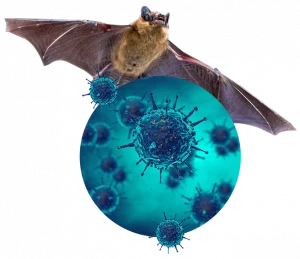Bats in the Southeast: Important Information for Homeowners
Bats are a common sight in the Southeastern United States, where the warm climate and abundant food sources make it an ideal habitat for various bat species. While these flying mammals play a crucial role in controlling insect populations, they can pose certain risks when they come into close contact with humans. Understanding the specific characteristics of bats in the Southeast can help you better protect your home and family.
Common Bat Species in the Southeast
The Southeast is home to several bat species, including the Brazilian free-tailed bat, the Eastern red bat, and the big brown bat. These species are often found roosting in attics, barns, and other sheltered areas. They are primarily insectivores, feeding on mosquitoes, beetles, and moths, which makes them beneficial to the environment. However, when they roost in human dwellings, they can create significant challenges.
One of the most significant concerns associated with bats in the Southeast is the potential for disease transmission. While bats themselves are not aggressive, they can carry diseases that pose serious health risks to humans and pets.
Diseases Carried by Bats in the Southeast
• Rabies: Rabies is one of the most well-known diseases associated with bats. Although not all bats carry rabies, those that do can transmit the virus through bites or scratches. Rabies is a deadly disease if not treated promptly, making it crucial to avoid direct contact with bats.
• Histoplasmosis: Another disease linked to bats is histoplasmosis, a respiratory illness caused by the inhalation of spores from the fungus Histoplasma capsulatum. This fungus thrives in soil enriched by bat guano (droppings). Infected individuals may experience flu-like symptoms, and in severe cases, the disease can lead to chronic lung issues.
• Other Zoonotic Diseases: Bats can also be carriers of other zoonotic diseases, including leptospirosis and salmonella. These diseases can be transmitted through contact with bat urine, feces, or contaminated surfaces.
Bat Behavior and Seasonal Patterns in the Southeast
Understanding bat behavior and their seasonal patterns can help in managing and preventing infestations. In the Southeast, bats are most active during the warmer months, from late spring to early fall. During this time, they seek out roosting sites to give birth and raise their young. As temperatures drop in late fall, some bats migrate to warmer areas, while others enter a state of torpor, similar to hibernation, in secluded locations.
This seasonal activity means that bat infestations are more likely to occur in the spring and summer when bats are actively seeking shelter. Homeowners should be particularly vigilant during these times, inspecting their properties for signs of bat activity.
Given the potential health risks and the protected status of many bat species, it is essential to rely on professional wildlife removal services, like those offered by PCA Wildlife Removal, when dealing with a bat infestation. Our team is trained to handle bat issues humanely and effectively, ensuring the safety of both your family and the local bat population.
If you are seeing bats in or around your residential or commercial property Contact Us for help!




